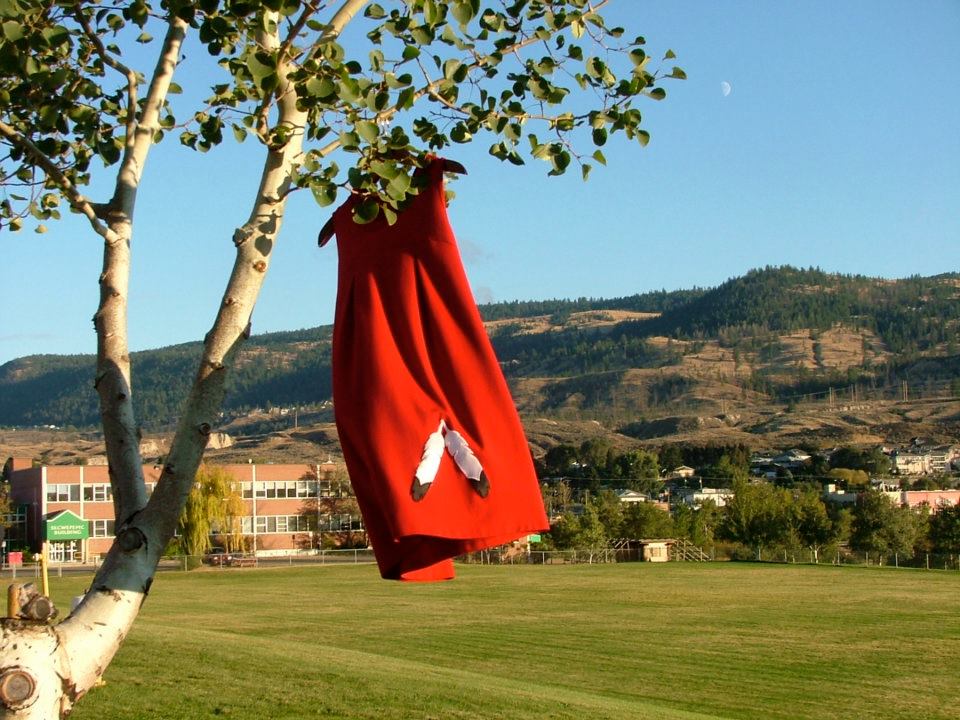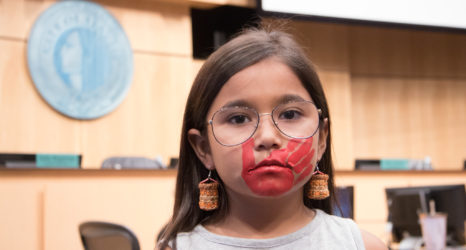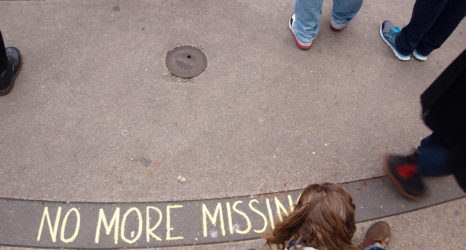Yesterday was National Day of Awareness for Missing and Murdered Indigenous Women and Girls. But I want to continue the call to lift up Native women whose voices have too long gone unheard.

I’m a Navajo woman and one of billions of people who have experienced sexual harassment or assault. I’m privileged enough to feel safe saying so in public, but that’s not typical for many Native women.
Indigenous women are subject to dramatically higher rates of sexual violence than white women: one in three Native women in the U.S. has been raped in her lifetime, and three in five has been physically assaulted. The truth is that Native women face a much higher danger in their everyday life than white women—and the rate of Native women and girls who go missing annually is nothing short of disturbing.
I visited the Smithsonian last month to see the REDress Project, an astonishing art installation where bright red dresses embody the overwhelming number of women and girls who go missing each year from Native communities. The artist specifically worked to emphasize the gendered and racialized nature of these crimes.
In the U.S. and elsewhere, there is an epidemic of missing and murdered Indigenous women (MMIW)—but sexual and physical violence is not part of traditional Native norms. The vast majority of the sexual violence experienced by Native women, children and other people with marginalized identities originates outside of their own communities. Over eighty percent of the sex crimes committed on Tribal lands are committed by non-Native men immune from prosecution by Tribal court.
The issue of sexual violence is especially pervasive in Native communities that host “man camps”—fossil fuel extraction sites with predominantly male workers. Honor the Earth, a Native-led organization working on environmental issues, reports that Native communities in North Dakota experienced a dramatic spike in sexual assault and violence when the population doubled with non-Native fossil fuel project workers. In 2013, the group reported that “violent crime has increased 7.2 percent, while 243 reported rapes occurred in 2012—an increase from 207 in 2011.”
As an Indigenous woman, I recognize that gender-based violence is a symptom of colonialism. Unjust governance has resulted in extreme pollution of Native lands, and it has left Indigenous communities stuck in a cycle of violence. The risk to Native communities heightens with each introduction of a pipeline or oil project on Native lands. With disproportionate attacks on the lands we live comes a concrete danger to our women and children.
In 2010, the U.S. Department of Justice implemented the Tribal Law and Order Act in an attempt to mitigate this cycle of violence. The administrative rule meant to better empower Tribal courts to try crimes against Native communities. But years later, the agency has failed to enforce the rule in a meaningful manner, and the crisis continues to grow.
Too often, Native women are unheard, violent crime statistics are underreported and Tribal courts lack funding to keep predators incarcerated and pay for legal representation. That’s why I was inspired to see Native women elected to Congress in 2018—and watched in hope as Rep. Debra Haaland called for a thorough, nationwide probe of the MMIW crisis.
Our federal agencies must approach this crisis in the urgent and serious manner it requires and give sovereign Tribal governments access to the United States crime information databases. Here at Sierra Club, we’re demanding the U.S. government release statistics related to the disappearance, assault or murder of any Native women.
Words fade in the absence of action. It’s long past time for the Department of Justice to improve the implementation of the Tribal Law and Order Act.
It’s long past time the United States says Native Women, Too.





